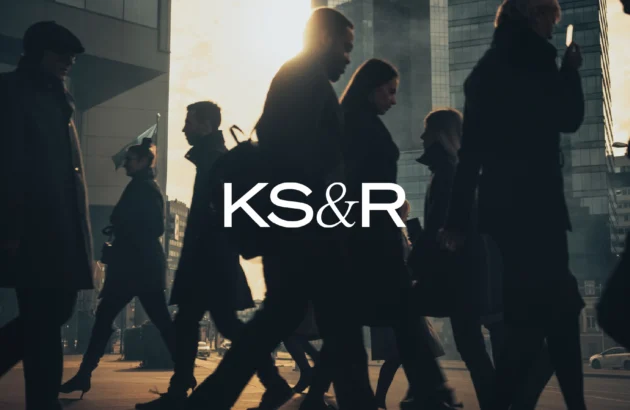What is Employee Experience & why is it important?

What is employee experience?
Now we’re on the other side of a global pandemic, the employer-employee relationship has changed forever. The ‘Great Resignation’ occurring across certain industries and job roles means companies are paying even more attention to employee experience (EX).
Organizations from enterprises to consultancies are trying to get to grips with EX. What does it mean? How can you define it? What does it include?
Josh Bersin gave his perspective by saying: “All the programs we’ve invested in over the years, such as employee engagement, diversity and inclusion, leadership development, performance management, are all part of the Employee Experience. So, in a sense Employee Experience is not a ‘program’, it’s a ‘topic’.
EX covers every aspect of employee interaction with the organization and colleagues. But recently there’s been an evolution in employee experience. It’s the individual’s personal interactions and broader cultural considerations for the entire organization.
Why is employee experience important?
McKinsey’s research shows that people who report having a positive employee experience have 16 times the engagement level of employees with a negative experience, and that they are eight times more likely to want to stay at a company. In the ongoing ferocious battle for talent, keeping the people you already have is crucial to create value, improve business effectiveness and deliver results.
Creating an engaged employee cohort through a positive employee experience has a profound impact on a business. You’ll experience lower employee churn, stronger team collaboration, improved communication, greater productivity, increased customer satisfaction, and better ROI.
Stages of employee experience
According to Gallup, there are seven stages of the employee experience. These include interactions with managers and associates from the very first recruitment touchpoint to the employee’s departure from the organization. The experiences at each stage will define the employee experience and your employer branding.
Attract
To attract the best talent, employee branding is crucial. Are you visible on social media? Do your current employees promote open positions? Are your reviews on knowledge sharing sites such as glass door positive?
Hire
Are you fair with your hiring? Are job roles defined and advertised via the right channels? Do candidates feel that they could fit into your organization? Are your recruiting managers confident in picking the right fit for their team and the wider organization?
Onboard
This is the moment to affirm employees’ choice and make them feel that their decision to join was right. An informative and engaging onboarding program is key to making employees happy and ensuring a smooth integration into your team. The first few weeks in a new role can be overwhelming, so check in with new team members often.
Engage
This stage is sometimes neglected, and where the high-performing teams differentiate themselves from the mediocre. Strong employee engagement is demonstrated by a sense of purpose, a collaborative attitude and a cohesive team that communicates effectively.
Perform
It’s difficult to separate the engage stage from the perform stage as the two are intertwined. An engaged employee performs well, and often beyond expectations. This is reflected in positive performance reviews, and expectations that grow over time, alongside achievements.
Develop
It’s all very well having high performing teams, but you need to feed the beast. To keep performance levels high, you need to make sure your employees have what they need to keep them growing. Offering opportunities to refine current skills and learn new things are key to keeping people happy in their role. You also need to make sure your employees know where the business is going – shared values and goals make for a motivated team who can see where their contributions are making an impact.
Depart
Parting is sweet sorrow indeed, but you can make it more palatable with an effective offboarding program. Remember, former employees talk, and their opinion on whether you’re a good employer can have tangible impacts on your talent attraction. A bad score on glassdoor can weigh down your recruitment efforts and affect current employee morale.
Employee experience survey types
To find out what your employees think, you must ask them. But not all surveys are created equal.
From employee attitude surveys asking how employees feel, to employee opinion surveys that explore views and beliefs, it’s all about asking the right questions.
We breakdown the types of employee experience surveys and when to use them:
Employee satisfaction
Use this to understand what’s missing for your employees and identify what you can address to improve their satisfaction at work.
Employee engagement
We know that employee engagement has a profound impact on business growth and profit, so measure how interested and dedicated your employees are to their role, colleagues, management, and the company.
Employee performance review
The often-dreaded semi-annual or annual appraisal – this is an opportunity to assess employee performance: reward positive results and address any weaknesses that might be holding the employee back.
360 surveys
Less common than performance reviews, the 360 survey offers employees and their managers insight into how the employee is viewed at all levels of the organization, and external contacts, such as vendors.
Organizational assessments
With these, the company can see what its key strengths are from a global perspective.
Employer improvement
Employees can use this survey type to share feedback about their employer. It offers an opportunity for you to see what’s working, and what isn’t.
Employee benefits
Understanding what your employees think of current benefits, and asking what benefits they would like in the future will help your organization to tailor benefits and adjust to employee’s changing needs.
Professional development
By asking employees whether they can access training and development you can see if you’re providing opportunities for growth and supporting their longer-term career goals.
Evolution of Employee Experience
As EX is in its infancy, let’s make sure we learn from past mistakes and avoid glaring pitfalls. We think that to recognise the importance of employee experience and maximise the benefits, each organisation should consider:
- What does EX mean for your organization specifically? There’s no specific universal model, and each organization and its employees will have different needs and challenges. Your EX approach should evolve in tandem with your organization. Don’t get bogged down in what’s been done in the past but look to the future.
- How will data collection be different in the future? Surveys continue being an important method in collating employee views. However, there will be a clear change in how surveys are used and for what purpose. Watch this space!
- What can we do to go beyond surveys? Let’s broaden our minds by ensuring EX Management means more than “just” asking a bunch of questions on a screen. Modern technology allows us to do so much more to support a continuous dialog between employees and the organization (and managers/leaders).
- Are we clear on what our goals? Every initiative supporting or measuring EX should have a clear purpose and a clearly defined measure of success (ROI). And let’s be clear, a measure of success doesn’t always mean another survey!
Some common mistakes in employee experience management
Throwing **** at the wall to see what sticks
Trying multiple tactics to drive employee experience programs will only bog you down. When there are multiple initiatives, it’s hard to track what makes the difference. Examples of employee experience that work for one person but not the other could be that one employee considers free in-office lunches as a perk, but another feels like it’s pressure to come daily despite childcare logistics.
Drowning in data
You can have too much of a good thing, especially with data. If you’re collecting data from dozens of channels such as surveys, panels, interviews and so on, you run the risk of missing the wood for the trees. Narrow your focus and identify key metrics that link to results, so that you can see what tactics most impact your employee engagement program. Data is only as useful as the actions you can take on the back of it.
Mixed messages
Do emails from your HR Team tell the same story as your intranet? When an employee wants to learn more about a policy is the document up to date and easily found? Every touchpoint for your employee journey should have a consistent feel, from onboarding to departure. These days, employees are bombarded with comms across multiple channels, so keeping things clear is key.
Stuck-in-the-mud
These days, employees want more from their job than the pay check. Demographic shifts and the once-in-a-lifetime global pandemic mean employees are searching for purpose in their roles. Does your organization make employees feel valued and as if their efforts have an impact? The twice-annual review isn’t going to cut it anymore. Employees want to know if what they are doing is worth it, and also want their managers to support ongoing career growth and meaningful personal development.
Tap…tap…Can you hear me?
With so many touchpoints throughout the employee experience, insight can slip through the cracks. From human resources to learning & development, to employee resource groups and ad-hoc projects, there are multiple opportunities to enhance the employee experience. But this can only happen when the ultimate goals of an employee experience program are clear to everyone in the business. Getting everyone on the same page will make sure employee experiences are consistent and fruitful.
In all of this, we should keep in mind the ultimate business objective; seeing growth and achieving results. A best-in-class employee experience is a key factor in helping the organization to achieve its business goals.
Related stories
Qualitative research, upgraded: Quantitative scale with AI
Data doesn’t always speak for itself. It needs a translator. A conductor. A storyteller. And that’s exactly what Visualizations in Research HX is built to be.

Research HX deep dive: Visualizations
Data doesn’t always speak for itself. It needs a translator. A conductor. A storyteller. And that’s exactly what Visualizations in Research HX is built to be.

Getting the balance right for KS&R
Getting the balance right for KS&R Tools used How we helped market research firm KS&R balance keeping their tailor-made approach to research with saving their people time. The challenge Creating custom-made research despite market pressures KS&R needed more than a standard survey solution. Their research required rich customization, razor-sharp methodologies, and the flexibility to reflect real-world decision-making. Off-the-shelf […]

Learn more about our industry leading platform
FORSTA NEWSLETTER
Get industry insights that matter,
delivered direct to your inbox
We collect this information to send you free content, offers, and product updates. Visit our recently updated privacy policy for details on how we protect and manage your submitted data.